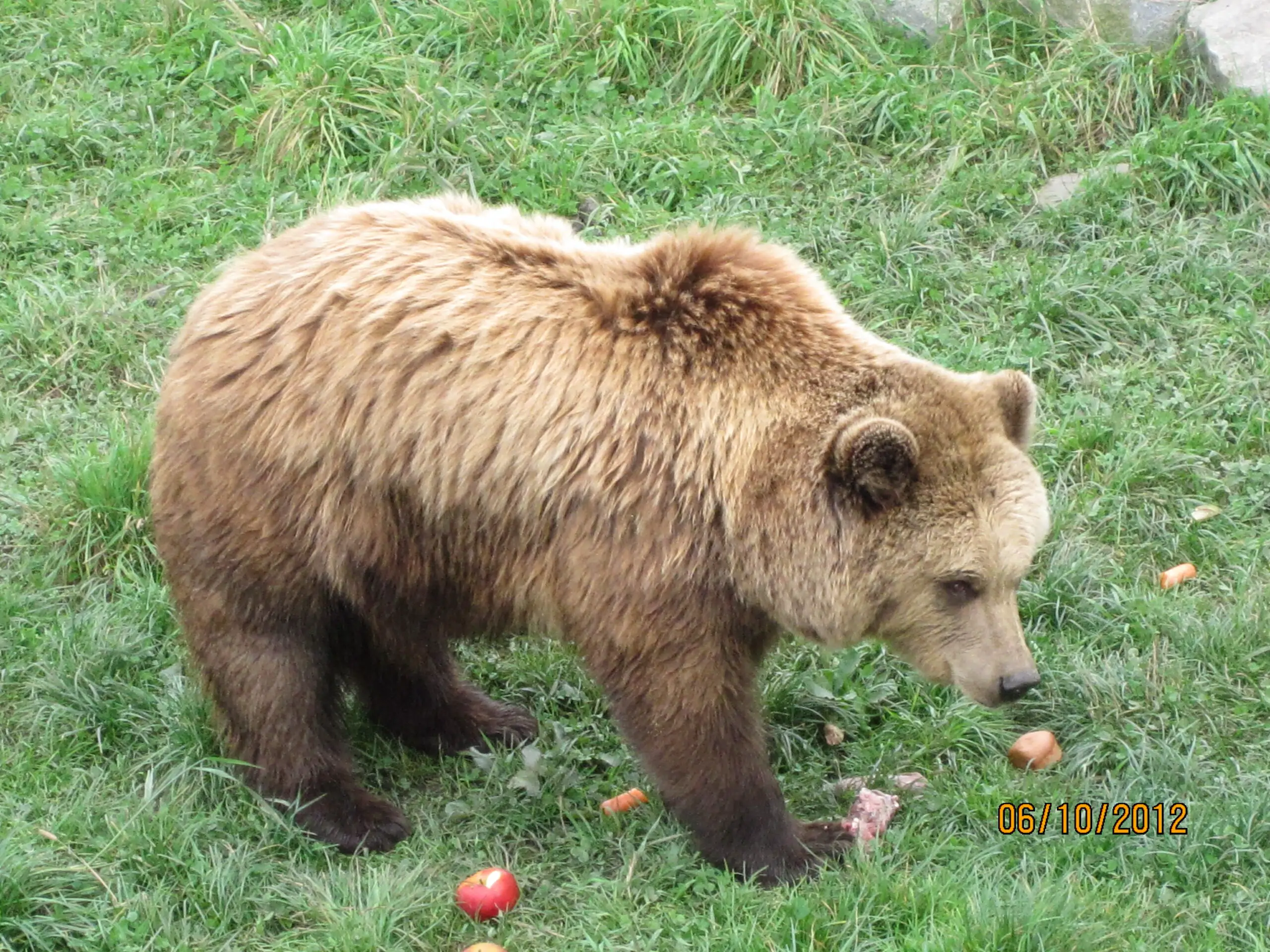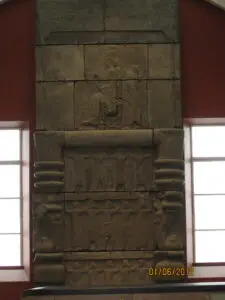The numbers of animals that were killed in the Colosseum and the other arenas were enormous. But what happened to these dead animals?
Some of the dead animals were transported from the Colosseum to mass graves outside of the city or were thrown into the river Tiber. But most of the meat of the dead animals was probably distributed amongst the roman poor.
Let’s find out why and how that happened.
Transporting animals to the mass graves
The mass graves outside of the city of Rome were a dreaded place. It was here that criminals who were executed during a day of gladiatorial games would be buried.
Click here for my article with more information on how and when during a day of gladiator fights criminals were executed in the Colosseum.
The animals would share their last rest with unclaimed slaves (laying dead or dying slaves out on the streets was a popular way for the owner to save a view bucks for the burial of a slave), the poorest of the poor of the roman citizens, and the occasional animal that was killed in the Colosseum or prior arenas.
Click here to learn more about where Gladiators would fight before the Colosseum was finished in 80 AD.
The Corpses of Gladiators would normally NOT be buried in these mass graves, click here for my article to find out why not!
Another fast but not particularly clean way of getting rid of the animal bodies was to throw them into the River Tiber. That was sometimes also done with the corpses of extremely poor Romans or the bodies of slaves.
The advantage was that one did not have to transport the bodies through the entire city, the downside was that throwing corpses into a river that crosses the city, especially during the hot Mediterranean summer screams for problems.
Usage of animals that had died in the arena as a source of meat:
Now there were occasions when lifting a dead animal on a wagon and towing that wagon through the city was not practicable. I mean it is possible if you got a dead deer, but what about a couple of dead elephants?
In addition to that kind of logistical transport problems, there was another factor: These animals were freshly killed, which meant that their meat had not gone bad yet.
And a large part of the roman population did not have regular access to meat….you see how another, more efficient, and more people-friendly solution appear.
Now don`t get me wrong. I`m not talking about the patricians or about the middle class.
Both the patricians and plebeians who belonged to the middle-class, craftsmen, for example, had enough money to regularly buy their meat at the butcher shop.
We actually know that thanks to excavations in the parts of Rome that, during antiquity, were mostly populated by craftsmen.
The excavations have shown a broad variety of animal bones from ducks and chickens to pigs and cattle. That shows that meat was regularly eaten in the middle-class districts of Rome.
So standing in line for a piece of meat was below the middle class and definitely below the patricians. Find out more about the different social classes of Rome in my article here!
By the way, if you are interested in some of the dishes (and recipes) that patricians indulged in you might want to check out an ancient cookbook written by Apicius.
Now I have to warn you that some of the roman dishes might not be appreciated by us modern-day people but I have to confess that cooking some of these dishes was pretty fun (and many of the dishes surprisingly tasteful).
The poor part of the roman population on the other hand barely ever got to eat meat. If they got meat that meat would usually be the meat of sacrificed animals like bulls.
And even though animal sacrifices were a regular occasion in Rome the number of meat that could actually be distributed was rather small.
Most of the poor Romans, during the time of the roman empire we are talking about more than 200.000 people, could only dream of eating meat on a somewhat regular routine.
The poorest of the poor were mostly day laborers, impoverished farmers, released slaves, and others. Many of them were so poor that they had to rely on the public wheat distribution to survive. By the way. It was actually the expansion of the roman republic that caused the impoverishment of large parts of the roman middle class. Find out more about why the expansion of Rome and the decline of the roman middle class are closely connected in my article here.
Click here for my article with more information on the public wheat distribution and why the senate/the emperor had a personal interest in that kind of welfare.
The diet of poor Romans, there were up to 200.000 of them, mostly consisted of grains, a little bit of vegetable, olive oil, and Garum.
Here you can find my article with more detailed insights into the eating habits of the common roman.
Garum by the way was a kind of roman instant seasoning with a quite unique taste. Now I`m gonna warn you that the taste of garum is REALLY unique but if you are interested in tasting the ancient instant seasoning you can get yourself a bottle here at amazon.
We know about the utilization of these animals thanks to the roman writer Apuleius (around 124-170 AD) who describes how in a greek city a few bears that were caught for the games had died due to the unfamiliar climate.
Apuleius describes how the poor of the city started to cut pieces of meat out of the carcasses that were laying on the streets and carrying them home.
Now that kind of meat procurement seems totally unhygienic to us. But in fact, it was not so different from the roman butcher shops.
The Butcher shops also transported their animals through the city and oftentimes also butchered them on the streets. So the sight of men carrying pieces of meat through the streets was probably pretty common. The clean, marmoreal city as which many movies like to portray Rome was actually an overcrowded, fly-infested city with dirty and due to a lack of police, dangerous streets.
Now I`ve been talking a lot about Rome. Do you wonder how Rome was founded? I wrote an entire article were I present the myth and the scientific truth of how Rome was founded. Please check it out!
How was the meat distributed?
Since for the poor, meat was such a precious resource the organizer of the gladiatorial games had to come up with a distributing system.
Leaving it to chance who would get meat and who wouldn`t, would have led to massive riots.
Conveniently there were already public raffles during the gladiatorial games. You find more information on that here in my article.
These Raffles were held by throwing wooden balls with numbers of them into the crowd.
The catcher could then, after the games, collect his prize. Those prizes usually consisted of a container of wheat, olive oil, garum, or other staple foods. It could also consist of the meat and hide of one of the killed animals.
Now while rabbits or pheasants could immediately be picked up the meat of the larger animals could usually not be collected until the day after the games.
The reason being was that these animals were parted by butchers and a large number of animals would take their time to part.
Are you are interested in what types of animals had to fight in the Colosseum? You can find the answer here in my article.
Conclusion
While some animals were brought to mass graves outside the city or were thrown into the Tiber river most of them would probably have supplemented the monotonous diet of the lower classes.
If you are further interested in the surprising diet that gladiators ate you might want to check out my article here and if you are interested in how Rome was founded, not the myth but actual reality, you might want to check out my article here.
Take care of yourself because you deserve it. You really do.
Until next time
Yours truly
Luke Reitzer
Sources
K. Nossov; Gladiator: The complete Guide to Ancient Rome`s Bloody fighters (2011).
F. Meijer; Gladiatoren. Das Spiel um Leben und Tod (Amsterdam 2003).
M. Junkelmann, Das Spiel mit dem Tod. So kämpften Roms Gladiatoren (Mainz am Rhein 2000).


